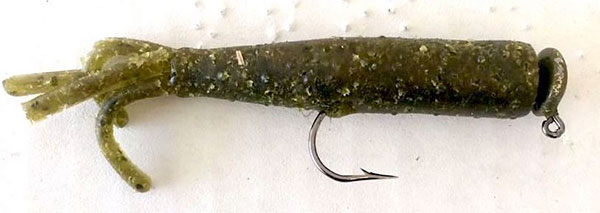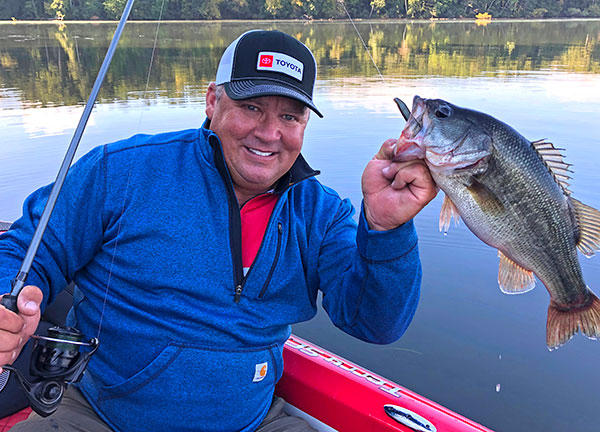- Details
Z-man Report
 Z-Man TRD TicklerZ
Z-Man TRD TicklerZ
In October 2015, upon releasing another bass and clicking his little “fish counter” for the 238th time, the legendary Ned Kehde paused to inspect the single Finesse WormZ™ at the end of his line.
Little did he know it, but Kehde’s implausible performance had effectually established what would soon become known as the ElaZtech® World Record.
238 bass on a single, very broken-in soft plastic bait.
It appears Kehde may have started something. For, this September, Brian Waldman of Brownsburg, Ind took the record to another level, once again validating the inexplicable durability of Z-Man’s radical softbait material, ElaZtech. Nineteen outings and 32 hours of fishing between August 19 and September 16 produced an extraordinary 245 bass, 5 pumpkinseed sunfish, 2 bluegills, 2 green sunfish and 1 bullhead—all on a single Z-Man TRD TicklerZ.
An inveterate veteran angler and longtime member of Kehde’s revered Midwest Finesse News Network, Waldman maintains a meticulous fishing journal that captured the trials and tribulations of his prodigious, occasionally tense mission.
“I’d read Ned’s posts about catching 238 or more fish on a single 4” Finesse WormZ and started thinking about possibilities,” recalls Waldman, a retired research technician.
“At the same time, I’d been reading posts on a different fishing forum where anglers were boasting about catching six or more fish on a single Senko-style bait before it fell apart. Imagine, being satisfied catching six bass on one bait, while we’re catching more than 200 with ElaZtech!
- Details
By Al McGuckin
 Terry “Big Show” Scroggins
Terry “Big Show” Scroggins
Along with trail cam pictures and Halloween costumes come swimbaits, A-rigs and squarebill crankbaits this time of year.
But don’t sleep on the category of lures Bill Lewis made famous more than 50 years ago, because lipless crankbaits flat-out catch ‘em when cool weather hits– and they likely always will.
Here are three tips from Terry “Big Show” Scroggins to soup-up your lipless crankbait game between now and Christmas when you’re not in a treestand.
Don’t just throw the standard size
The ½ ounce size is by far the most popular and top-seller of all time, but Scroggins says the smaller 1/4-ounce size will get you bites when the larger size won’t.
- Details
By Al McGuckin
 Terry “Big Show” Scroggins
Terry “Big Show” Scroggins
The first time Florida bass fishing legends Terry “Big Show” Scroggins and Peter “T” Thliveros met, Scroggins was 10 years old and mowing the lawn at Ditto lure company where Thliveros worked as a teen pouring Ditto’s famous Fire Claws, and Gator Tail worms.
Both youngsters had dreams of fishing for a living, but it’s doubtful they imagined back in 1979 that Peter “T” would later create a unique finesse Carolina Rig that would put thousands of dollars in their pockets as pros.
Yes indeed, credit the “Petey Rig” for a portion of the $4 million dollars the two best buddies have won as pros, including Scroggins’ Bassmaster Open win at Lake Toho, and Thliveros’ victory at the 2007 Bassmaster Memorial at Onondaga Lake near Syracuse.
“Yup, I’ve known Pete for 42 years. And anytime you’re struggling to get a bite, that Petey Rig he came up with will save your butt,” insists Scroggins who also shares a love of cooking and grilling with Thliveros.
So, what exactly is a Petey Rig?





